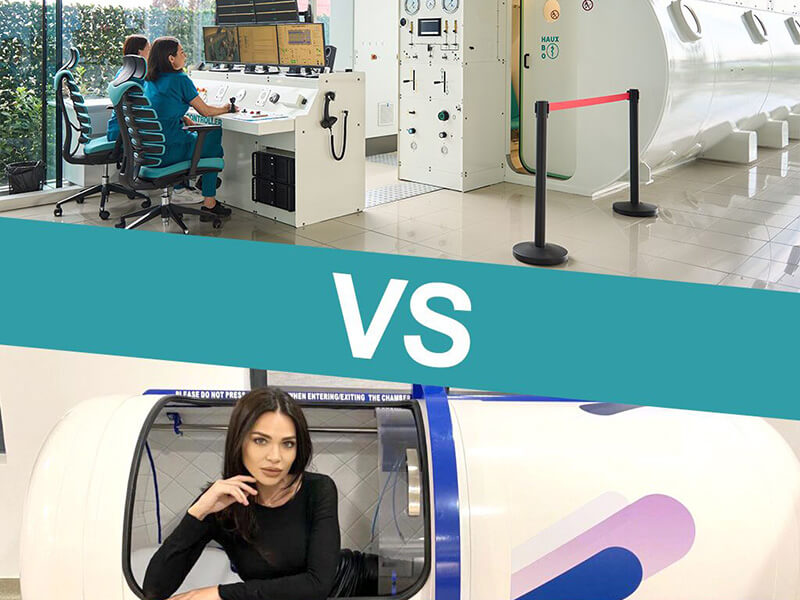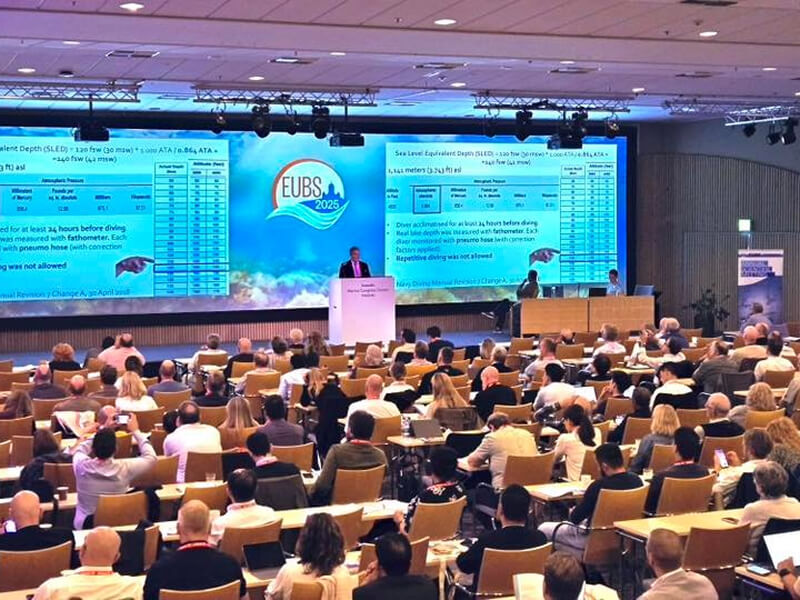
Article reviewed by: Dr. Sturz Ciprian, Dr. Tîlvescu Cătălin and Dr. Alina Vasile
Effectiveness of HBOT in Post-COVID syndrome
Since 2019, millions of people around the world have been infected with the new type of coronavirus, with a wide range of impacts. Although the vast majority of people recover relatively quickly from SARS-CoV-2 infection, there are cases where the clinical picture persists even months after the initial manifestations. Situations of this type characterise Post-COVID, Long COVID or Long-term COVID syndrome.
In patients with Post-COVID syndrome, there is a combination of manifestations that persist for a much longer time. Among the most common manifestations are fatigue, memory disorders, brain fog, sleep disorders, altered sense of smell, altered sense of taste, anxiety, muscle pain, shortness of breath and even gastrointestinal symptoms. All these manifestations can affect the individual's daily life and even become debilitating. Therefore, effective methods are being sought to combat Post-COVID syndrome, and hyperbaric oxygen therapy seems to have favourable prospects.
Hyperbaric oxygen therapy, a promising intervention in Post-COVID syndrome
As more and more people have had and are dealing with COVID-19, concern has been raised about what its impact on health will mean in the future. A significant number of people experience Post-COVID syndrome, and for them, it can be compared to a real uphill race. The damage is physical as well as psychological, and the fact that there is no standard way of disease progression and recovery leads to more stress and uncertainty. Results from the studies are beginning to emerge and come with a favourable outlook associated with hyperbaric oxygen therapy. This therapy, also called HBOT, can improve the manifestations of SARS-CoV-2 infection, especially in patients with Post-Covid Syndrome.
The hope for this type of treatment comes with the observation of improvement in the condition of damaged brain tissue and cognition. For example, in a study started in the winter of 2020 and conducted by researchers in Israel, the high efficacy of HBOT for patients with cognitive impairment and breathing disorders associated with Post-COVID syndrome was observed. Patients in the study group received 40 sessions of medical hyperbaric chamber therapy for 60 days, and each session involved breathing through an oxygen mask for 90 minutes. It should be noted that there was a control group that received normal air and did not enjoy the beneficial effects experienced by patients who breathed pure oxygen.
Multiplace hyperbaric chamber, the medical device available in Romania
The study in Israel was conducted in multiplace hyperbaric chambers. These are medical devices and should not be confused with cosmetic hyperbaric chambers. In the case of HBOT and multiplace hyperbaric chambers, the pressure and oxygen concentration are much higher, precisely so that the patient can benefit from the proven medical effects of Post-COVID syndrome.
Researchers liken it to a pressurised aircraft cabin, but even more spacious. The potential of HBOT to help patients with Post-COVID syndrome is very great, especially if the manifestations are correlated with changes in brain tissue. It should be known that there is also a multiplace hyperbaric chamber in our country, so people with Post-COVID syndrome in Romania can benefit from the favourable effects of HBOT.
How HBOT works and what is the role of HBOT in treating Long-COVID syndrome
Not all the details about Post-COVID syndrome are known yet, but HBOT has come as a lifeline for patients with the condition. HBOT is a type of therapy that involves breathing 100% oxygen in a pressurised chamber. The pressure during the sessions will cause oxygen levels in the blood and tissues to become higher, thus promoting recovery and healing.
Studies have shown that patients with Long-COVID syndrome who underwent hyperbaric oxygen treatment sessions did not only show beneficial cognitive changes. Thus, it was concluded that HBOT reduces fatigue levels, improves sleep quality and even benefits pain patterns. The researchers performed MRI scans and attributed all these changes to increased brain blood perfusion and neuroplasticity.
HBOT also has anti-inflammatory effects, which are effective not only in post-COVID syndrome. The mechanisms by which HBOT decreases inflammation are diverse, the first of which is based on an increase in cytokines. Raising plasma dissolved oxygen levels will stimulate the production of anti-inflammatory cytokines and growth factors. The overall inflammatory response may also be reduced by increasing the expression of anti-inflammatory genes.
How safe is the procedure?
Hyperbaric oxygen therapy is generally a safe procedure with very few associated risks. The vast majority of patients tolerate the therapy well and have no major side effects. However, it is important that each patient is assessed beforehand by a specialist to determine whether HBOT is the right procedure.
It should be known that HBOT comes with risks of fire or explosion, but these are practically non-existent if the procedure is carried out according to safety rules. Thus, patients should undergo this therapy only in authorised and accredited hyperbaric chambers and only in the presence of specially trained medical staff.
Also, extensive studies are currently being carried out to discover the effectiveness and safety of HBOT in Post-Covid Syndrome. It is expected that by the end of 2023, these studies will be completed and important new information will be shared with experts in the field and the general public.
What else can help?
It is important to know that researchers are still conducting studies to understand the long-term effects associated with COVID infection and to determine the most effective treatment options. The potential benefits of hyperbaric oxygen therapy have been shown in preliminary studies, so this intervention is very promising, but further studies are being conducted.
Along with HBOT, medical experts recommend maintaining a healthy lifestyle, as this too can also help relieve symptoms. Quitting smoking is the first step where the habit exists. A balanced diet combined with an optimal sleep schedule is also recommended. Stress should be avoided as much as possible. In addition, regular physical activity should not be forgotten, and aerobic exercises are the most indicated in this case.
References:
1. Clinicaltrials.gov: Safety and Efficacy of Hyperbaric Oxygen Therapy for Long COVID Syndrome (HOT-LoCO);
2. Healthline.com: ” Long COVID Symptoms: How Hyperbaric Oxygen Therapy May Help”
3. Hyperbaricmedicalsolutions.com: ”Hyperbaric Oxygen: A Promising Treatment for Long COVID-19”;
4. Leaps.org: “Hyperbaric oxygen therapy could treat Long COVID, new study shows”;
5. Medrxiv.org: ”Hyperbaric Oxygen for Treatment of Long COVID Syndrome (HOT-LoCO); Protocol for a Randomised, Placebo-Controlled, Double-Blind, Phase II Clinical Trial”;
6. Nature: “Hyperbaric oxygen therapy improves neurocognitive functions and symptoms of post-COVID condition: randomized controlled trial”;
7. Ncbi.nlm.nih.gov: ”Hyperbaric oxygen therapy for the treatment of long COVID: early evaluation of a highly promising intervention”.
8. Pubmed.ncbi.nlm.nih.gov: ”Hyperbaric oxygen reduces inflammation, oxygenates injured muscle, and regenerates skeletal muscle via macrophage and satellite cell activation”;
9. Uhms.org: ” Physiologic and biochemical rationale for treating COVID-19 patients with hyperbaric oxygen”;
10. Webmd.com: ” Hyperbaric Oxygen Treatment Helps Long Covid Patients, Study Says”;




